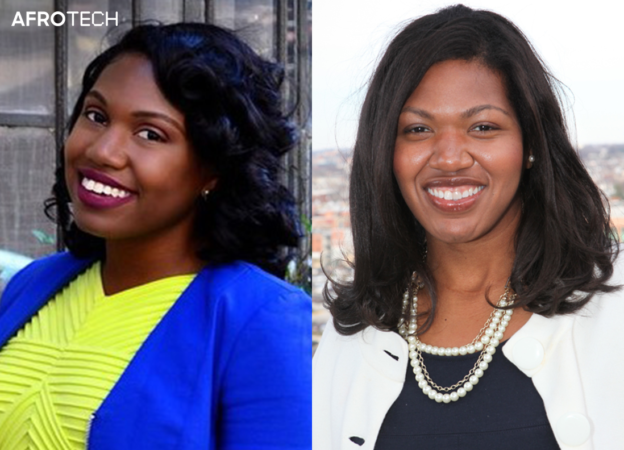What’s a day in the life of a government employee really like? As one of the largest employers in the country, the government employs everyone from postal workers to military professionals, making it an ideal place for those seeking the stability of federal employment while still enjoying various fields of work.
Though many assume there’s little flexibility or creative paths available, those interested in both a government and a tech role, for example, have been drawn to organizations like Technology Transformation Services (TTS), a megaforce in technology modernization within the government that operates under the United States General Services Administration.
There’s a certain air of mystery around working for the government, but those behind the scenes have a different story to tell. For Malaika Carpenter, an 18F content strategist at TTS, it’s meant diving into an entirely new industry. With a master’s degree in communications, Malaika used her writing and content creation skills to create a successful career as a digital consultant before joining TTS. Since then, she’s collaborated with various groups, including the Department of Justice’s (DOJ) Civil Rights Division, during which she’s helped transform the way the division engages with the general public through her work on a new, user-friendly online submission process.
In an effort to bridge the digital gap, Malaika also created an innovative video series that explored how to use GitHub, a code hosting platform for version control and collaboration, for content creation.
A content creator at heart, Marietta Jelks, research lead for USA.gov, has transformed a passion for storytelling and helping people into a thriving technology career at TTS. As the division of TTS that directly serves the public, Marietta has used her time at USA.gov to directly impact everyday Americans as they try to navigate and find information within the website.
This has meant compiling tons of information and repackaging it to make it easier for consumers to understand — a challenge she’s proven she’s up for. With over a decade at TTS, Marietta ensures that there’s a creative and empathetic approach behind the websites the public uses to find federal resources and more.
The pair recently sat down with us to demystify what their daily lives are really like, ways they’re allowed to be their creative selves, how TTS is making technology work for the public and enabling them to thrive digitally, and more.
Malaika Carpenter

On her career path and introduction to TTS:
So, my current position at TTS is as a content strategist within the 18F team, a digital consultancy that helps federal agencies build and buy digital services that improve how they serve the public. I’ve been doing content strategy for the last six years as an independent consultant before joining 18F at the start of 2020. But my introduction to this as a career path really started when I began my own career discovery of what it is that I really wanted to do.
Finding purpose and channeling it into a new career path:
I’ve always been very passionate about storytelling and expressing myself through words, so that’s always been an anchor that has guided my career. But I think this sort of discovery path into tech really began from the proverbial question that I think every artist or writer or author asks themselves: “Could I make money from this? Can I make money from being an artist?” Answering those questions led me down a few different paths, from majoring in marketing in college and doing advertising internships to eventually landing a job in pharmaceutical sales out of college.
After doing that for a while, I really wanted to go back to writing and expressing myself creatively. So I went to grad school. And instead of getting my MBA, which is very typical of, you know, undergraduate business majors, I decided to get a master’s in communications because, for the first time, I said, “You know what? I really feel like my purpose is really mastering my craft of communication through being an expert in communications.” So I did that.
Transitioning into the tech role through an unlikely door:
While completing my graduate education, I was still within pharmaceutical sales but was beginning to explore how things have transformed and evolved because of technology, because of social media, because of digital media. And that exploration led me to discover content strategy and user experience, roles that go hand in hand with building digital products. I also got a certificate in user experience design, which involved a project with a real-world client. As we were working on that project, I really understood what my role would be in terms of guiding the designer around what users would need to know, what they would want to do, what they would need to understand in order to use the product that we were designing, as well as guiding the more technical person into translating things in ways that users would understand. And so all of those experiences combined led me down this road of content strategy and technology.
One example of my recent work is content strategy for the U.S. Department of Justice Civil Rights Division. In close collaboration with engineers, designers, and content strategists like me at 18F, the Civil Rights Division has launched a user-friendly online submission experience at civilrights.justice.gov that transforms the way the division collects, sorts, and responds to civil rights reports.
The work that I’m doing here involves continuous learning, and I’m realizing new things. This is my first federal service job. This is my first time ever working in public service. I’ve always worked in the private sector. So I would say it’s been a time of continuous learning.
Marietta Jelks

How a passion for content-led her to join TTS:
In TTS in 2008, I came on to be the editor-in-chief of a book that we used to produce called the Consumer Action Handbook. So I definitely started as a content creator, and I managed that handbook along with the companion website, consumeraction.gov, and that was really my introduction. I had a background in consumer economics from my graduate degree, and it was like this perfect fit.
Ways that technology has shifted and enhanced her work at TTS:
We research everything: how people use our website, analysis of who uses our email, how they use it, what those demographics are. So from that perspective, it’s a lot of project management and timelines of not just content, but content design, writing, and content management systems. It’s testing all of these different pieces of the puzzle. If you’d asked me this in 2008, I would have given you a blank stare about that because I was so focused on my topic areas and so passionate about consumer issues. So my role has really expanded to not just one specific topic or one specific product, but the overall USA.gov platform.
Misconceptions about federal employees:
Sometimes, people may think we’re disconnected from real life or that we don’t have a sense of the struggles that everyday people have or what they’re trying to accomplish. And that cannot be further from the truth. We get surveys from the public about their experiences with our products, but people share their life experiences and what they’re trying to do, what they’re trying to resolve, and it really makes you realize that the work we do matters to somebody. I’ve read letters from people that would make me tear up. When people [reach out], you can hear the struggles that [they] are challenged with, things they’re anxious about. Anything from being unable to pay bills to people sick with cancer just reaching out to find resources. And it just brings it home, like, this is bigger than just this spreadsheet. This is real people’s lives.
How creativity is encouraged and promoted at TTS:
Employees’ ideas are definitely welcome, particularly within USA.gov. It’s always like, “Hey, I had an idea of how we could do this better. Maybe, if we created a page that does this or if we could have drop-down so we make it easier for people to do this thing.” The feedback is like “Oh that’s a great idea” or “Put the tech team on it and make it happen.” Ideas come from all across our organization, and it’s not so hierarchical or truncated or, you know, dictated by titles or roles.
Why it’s important to be open to new paths:
I just had my 12-year anniversary, and I’m like “Wow, I’ve done so much,” and I’ve been able to be part of so many different programs and seen how one thing led to another. And it wasn’t necessarily the path I thought I was going to have in government. I thought I was going to always do consumer things. I thought I was going to be a fashion designer when I was eight. So the fact that I have shifted and experienced this consistent progression, this consistent opportunity to serve people, amazes me. I was able to be a spokesperson for the office where we used a hashtag called #AskMarietta and told the public to ask me anything. I literally took questions from the public all the time and shared answers in a video series. I think it’s one way to see how the world has opened up to serve more and more people in different ways.
Technology has shifted how everyone does business, even the federal government. This is why more and more creative minds are being drawn to places like TTS. Not only are they invested in technological innovation, but TTS has committed itself to invest in the people behind the digital services too.
For more information on TTS or career opportunities, visit here.
This editorial is brought to you in partnership with TTS.
This editorial was produced in coordination with the General Services Administration (GSA). The posting of this editorial as well as any advertisement shown before or throughout this editorial does not constitute an endorsement of the source or advertisement and does not reflect the official policy or position of GSA. GSA has no control over the advertisements shown.


